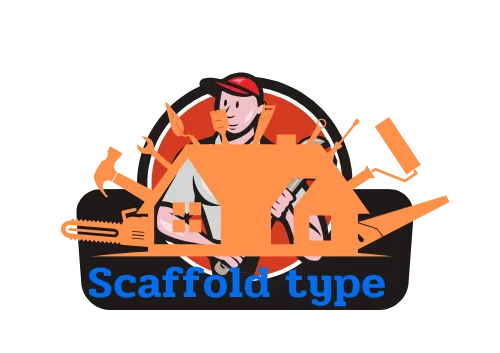Phone:
(+65)8319-0742
In an era where critical thinking and problem-solving abilities top the list of essential skills, educators are turning to dynamic Problem-Solving Frameworks in Education. These frameworks not only cater to a variety of learning needs but also weave student-centered approaches into the very fabric of curriculum development. One such comprehensive framework, the Multi-Tiered System of Supports (MTSS), has become a cornerstone in education, underscoring the importance of tailoring educational strategies to enhance critical thinking skills across diverse student populations.
The following guide delves into the practical implementation of MTSS by exploring how it aids school districts, educators, and parents in championing exceptional education programs. By dissecting its structure and necessity in modern education, we unlock actionable insights for educators striving to foster a supportive and enriching classroom atmosphere conducive to active problem-solving.
Key Takeaways
- Understanding the function and benefits of the Multi-Tiered System of Supports (MTSS).
- Strategies to implement Problem-Solving Frameworks in Education in diverse classrooms.
- The pivotal role of educators in nurturing problem-solving and critical thinking skills.
- Essential components of curriculum development that support MTSS.
- The significance of a student-centered approach within educational strategies.
- Techniques to evaluate and monitor ongoing student progress through problem-solving activities.
Understanding Multi-Tiered System of Supports (MTSS)
At the heart of personalized learning is the Multi-Tiered System of Supports (MTSS), a dynamic Problem-Solving Framework in Education. MTSS is designed to empower educators with tools that best support student learning by focusing on the provision of strategic, tailored instruction. The integration of critical thinking skills and ongoing formative assessment allows educators to adjust instruction to meet the constantly evolving needs of their students. By employing problem-based learning strategies and smart decision-making frameworks within MTSS, educators are equipped to create a learning environment where every student can achieve academic success.
The Essence of MTSS in Effective Education
MTSS goes beyond traditional teaching methods. It is a comprehensive approach that emphasizes data-driven decisions and tiered instruction. This approach helps educators to not only identify students who are struggling but also craft interventions targeting their specific needs. With MTSS, the development of critical thinking skills and problem-solving abilities is woven directly into the curriculum, rather than being treated as a separate component of education.
Navigating the Tiers: From Core Instruction to Intensive Intervention
MTSS’s tiered approach is a seamless continuum that begins with high-quality core instruction (Tier 1), supplemental interventions (Tier 2), and, if necessary, individualized and intensive interventions (Tier 3). Each tier represents a different level of instructional support, which allows schools to allocate the precise resources and problem-solving frameworks needed for students to flourish academically.
MTSS: A Response to Diverse Student Needs
A core advantage of MTSS lies in its agilityâa swift and targeted response to the learning and behavioral needs of students. It frames an inclusive, educational environment that operates on the principle that a one-size-fits-all approach falls short of addressing complex classroom dynamics. This personalized strategy harnesses decision-making frameworks to support a diverse range of learners, ensuring that every child progresses toward achieving their full potential.
| MTSS Tier | Focus | Support Strategies |
|---|---|---|
| 1 – Core Instruction | Universal Instruction for All Students | High-quality curriculum, differentiated instruction |
| 2 – Supplemental Interventions | Targeted Group Interventions | Small group sessions, skill-specific activities |
| 3 – Intensive Interventions | Individualized Support | One-on-one instruction, individualized education programs (IEPs) |
As educators, embracing the MTSS framework means valuing a proactive stance on education. The strategic implementation of MTSS cultivates an environment that not only upholds problem-solving skills but also promotes a culture of success accessible to every student, regardless of their academic standing or learning preferences.
Role of Teachers in Problem-Solving Within MTSS

In the sphere of Problem-Solving Frameworks in Education, teachers have a unique and crucial role. They extend their influence beyond traditional teaching methods, stepping into the realm of being facilitators and guides in student-centered approaches. This role is profoundly evident within the Multi-Tiered System of Supports (MTSS), where educators take the lead in orchestrating problem-solving activities that cater to diverse learning needs.
The Interdisciplinary Team Approach
Establishing a robust interdisciplinary team is pivotal in classroom problem-solving and MTSS. In such a collaborative environment, teachers work as part of a collective involving various stakeholders, including parents and instructional personnel. Each member of the team brings a unique perspective to the table, ensuring that the devised educational strategies are comprehensive and inclusive. Teachers facilitate this synergy, leading to a cohesive and effective approach toward addressing student challenges.
- Involvement in continuous professional development on platforms such as Florida’s online training courses.
- Direct engagement in collaborative projects that put theory into practice.
- Integration of parents’ insights to further personalize student learning plans.
- Coordination with other educators to share resources and intervention strategies.
Fostering a Collaborative Problem-Solving Classroom Environment
For problem-solving to be successful, fostering the right environment is indispensable. Teachers have the responsibility of shaping their classrooms into arenas where open communication thrives, and where every student feels empowered to engage in problem-solving activities. It’s an atmosphere where mistakes are seen as learning opportunities, and persistence is encouraged.
The table below provides concrete examples of strategies used by educators to cultivate a healthy problem-solving atmosphere within MTSS:
| Strategy | Description | Outcome |
|---|---|---|
| Group Work | Encourage team-based problem-solving to utilize varied skill sets. | Students learn from peers and enhance their collaborative skills. |
| Critical Thinking Tasks | Design exercises that challenge students to think critically and independently. | Students develop a deeper understanding of concepts and become self-reliant problem solvers. |
| Reflective Discussions | Conduct post-activity discussions to reflect on the problem-solving process. | Students articulate their thinking process, leading to improved metacognitive skills. |
| Real-world Scenarios | Integrate real-life problems to make learning relevant and meaningful. | Students apply academic knowledge to real situations, enhancing retention and relevance. |
Embracing these educational strategies within the classroom not only equips students with the necessary tools for problem-solving but also instills a sense of confidence and independence that they will carry throughout their academic journeys and beyond.
Integrating Problem-Solving Frameworks Into Curriculum Development

Embedding problem-solving frameworks into curriculum development is not only innovative but crucial for equipping students with the ability to navigate complex challenges. By focusing on educational strategies that promote problem-solving activities, students are encouraged to engage in critical thinking and to apply their skills in practical contexts.
Creating a Problem-Based Learning Curriculum
In the endeavor to forge robust problem-based learning curriculums, educators should weave problem-solving activities throughout their subject matter, effectively transforming passive classrooms into vibrant arenas of inquiry and debate. Curriculum development specialists, alongside teachers, must design learning experiences that are deeply rooted in real-world problems to facilitate deeper understanding and retention of knowledge. These curricular designs often nurture a studentâs patience and thoroughness, crucial traits for academic and professional success.
For example, a math curriculum may include complex real-life problems that require students to use problem-solving strategies to arrive at solutions, thereby reinforcing mathematical concepts and procedures. On the other hand, a science curriculum might incorporate lab activities designed around troubleshooting experiments, fostering scientific inquiry and resilience during unexpected outcomes.
Assessing Student Progress Through Continuous Monitoring
Continuous monitoring stands as a cornerstone in the cyclical process of student assessment. Regular, data-informed check-ins provide teachers with critical insights into each student’s learning journey, enabling timely interventions and personalized support. This level of continuous monitoring and feedback ensures that curriculum development remains a dynamic and responsive process, tailored to the unique learning pathways of every student. Through such meticulous monitoring, we embrace a truly student-centered approach, recognizing each learner’s pace and style while propelling them towards academic mastery and self-reliance.
In pursuit of this goal, teachers leverage a suite of formative and summative assessments, which are then analyzed to inform curricular adjustments. This agile approach to curriculum development means that feedback loops are ever-present, outlined clearly by real-time classroom data. It poises educators to refine teaching methodologies and educational strategies, ultimately boosting student engagement and success in problem-solving activities.
Expert vs. Novice Problem Solvers: Techniques in the Classroom
In the journey of learning, it’s crucial to differentiate the thought processes between expert problem solversâtypically the educatorsâand students, who are often novice problem solvers. The gap in problem-solving abilities between these two groups is apparent, but with the right educational strategies, it can be bridged effectively. A classroom that prioritizes Problem-Solving Frameworks in Education does not merely aim to impart knowledge; it strives to cultivate critical thinking skills that transform novices into experts over time.
Cultivating Critical Thinking Skills Through Problem-Solving Practices
Problem-solving practices serve as the bedrock for critical thinking development. When students engage with problems, they’re not only learning to find solutions but are also learning to understand and articulate the processes behind those solutions. Techniques like ‘two-column solutions,’ for example, can guide students to reflect critically on each step of their problem-solving journey. This reflective practice is key in turning routine exercises into opportunities for enhancing critical thinking skills, as students can see where their reasoning is strong and where it might falter.
Fostering Independent Problem-Solving Abilities in Students
Independence in problem-solving is a milestone in educational development. Teachers model this skill by demonstrating problem-solving processes and gradually reducing their assistance, placing the responsibility of finding solutions onto the shoulders of their students. Through frameworks like MCPS Collaborative Problem Solving, educators are ensuring that students are not handed answers but are empowered to navigate problems independently. This approach nurtures perseverance, resilience, and autonomyâall attributes of strong critical thinkers. By fostering these capacities, we ensure that students are equipped not just for academic challenges, but for real-world scenarios where problem-solving is a daily necessity.
FAQ
What are Problem-Solving Frameworks in Education?
Problem-solving frameworks in education refer to structured approaches and methods used to guide students through the process of identifying and resolving problems. These include teaching critical thinking skills, decision-making strategies, and employing problem-based learning activities to develop a studentâs ability to solve problems independently and efficiently.
How does the Multi-Tiered System of Supports (MTSS) support effective education?
MTSS supports effective education by providing a comprehensive, evidence-based framework that addresses academic, behavioral, and social-emotional needs of students. It employs a tiered model of interventions, ensuring every student receives the level of support necessary for success through integrated data collection and responsive instructional strategies.
Can you explain the tiered approach in MTSS?
The tiered approach in MTSS typically involves three levels. Tier 1 includes core instructional practices designed for all students. Tier 2 offers targeted interventions for students who need additional support. Lastly, Tier 3 provides intensive interventions for individuals who demonstrate significant difficulties, despite receiving supports at Tiers 1 and 2.
What is the role of teachers in the MTSS problem-solving process?
Teachers play a critical role in MTSS as the primary providers of instruction and targeted interventions. They collaborate within an interdisciplinary team, contribute to the problem-solving process, facilitate a supportive classroom environment, and use ongoing data to determine the effectiveness of instructional strategies.
What does establishing a problem-solving classroom environment involve?
Establishing a problem-solving classroom environment involves creating a space where students feel comfortable sharing ideas, taking risks, and engaging in critical thinking. Teachers encourage open communication, teamwork, and the development of problem-solving skills through structured activities and thoughtful question prompts.
How does problem-solving integrate into curriculum development?
Problem-solving integrates into curriculum development by designing learning experiences that challenge students to apply their knowledge and skills in identifying and solving real-world problems. Curriculum developers aim to create a problem-based learning environment that is student-centered and uses continuous monitoring to adapt instructions based on students’ progress.
Why is continuous monitoring important in a problem-solving educational approach?
Continuous monitoring is crucial in a problem-solving educational approach as it allows educators to track student progress, gauge the effectiveness of interventions, and make data-driven decisions. It ensures that instructional strategies remain aligned with student needs and learning goals.
What distinguishes expert from novice problem solvers in the educational context?
Expert problem solvers typically have a deep understanding of their subject matter, can apply problem-solving strategies flexibly, and facilitate learning by guiding students through complex problems. In contrast, novice problem solvers require more guidance and structured opportunities to practice and develop these crucial skills.
How can teachers cultivate critical thinking skills through problem-solving practices?
Teachers can cultivate critical thinking skills through problem-solving practices by implementing activities that require careful analysis, reasoning, and reflection. Such practices include discussing varying perspectives, encouraging inquiry, and using problem-solving frameworks that require students to articulate their thought processes.
What are some techniques to foster independent problem-solving abilities in students?
Techniques to foster independent problem-solving abilities include providing opportunities for students to work through problems on their own or in small groups, offering minimal but pointed guidance, and encouraging reflection on the problem-solving process itself. Activities that promote self-assessment, such as “two-column solutions,” can also be effective.
Source Links
- https://cft.vanderbilt.edu/guides-sub-pages/problem-solving/
- https://nemtss.unl.edu/wp-content/uploads/2018/11/Teachers-Guide-to-Problem-Solving-Within-The-MTSS-Framework-Florida.pdf
- https://www.montgomeryschoolsmd.org/siteassets/district/community-engagement/linkages-to-learning/MCPS-Collaborative-Problem-Solving-Framework.pdf

















